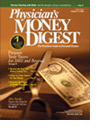Publication
Article
Physician's Money Digest
Select the Right Option for Your Money
Author(s):
In today's evolving health care world,many health care professionals arechanging employers. If you findyourself in this situation, it's importantthat you know what to do with themoney in your former employer's retirementplan. Following is a list of options:
• Take the money and run. This isgenerally not a good idea. First, the proceedswill be subject to ordinary incometaxes. Second, adding your retirementdistribution to your other income couldplace you in a higher tax bracket. Third,if you are under age 591/2, you may besubject to a 10% federal penalty.Finally, if you request distribution ofyour retirement funds, your employer isrequired to withhold 20% for federaltaxes, regardless of what you owe.
• Keep your savings where they areor transfer them. If the plan allows it,you could leave your funds with yourold employer or transfer them to yournew employer. If you have a 401(k) plan,look carefully at both employers' fundchoices before making a decision. Ifyou're concerned about personal liabilityand asset protection, this may be yourbest option. Funds held in 401(k) plans,qualified profit sharing plans, and otherEmployee Retirement Income SecurityAct plans are protected from creditors.
• Roll your retirement funds into anIRA. This option offers the most flexibility.Compared to a typical 401(k) plan, anIRA offers almost unlimited investmentchoices. You also have unlimited access tothe funds in an IRA. This is not the casewith 401(k) plans and other qualifiedretirement plans; funds are typically onlyavailable through loans, except in certainsituations. Whether an IRA is protectedfrom creditors is a matter of state law.
Also, you have the option to convertyour IRA to a Roth IRA. Although thisconversion creates a taxable event, yourdistributions during retirement will not besubject to income taxes. To be eligible fora Roth conversion, your adjusted grossincome must be less than $100,000.
There are two types of rollovers: directand indirect. With a direct rollover, yourequest that your previous employer transferthe funds directly to your new custodian.Funds are usually transferred electronically.At times, an employer will mail acheck made payable to the new custodian,and you would deliver the check. With anindirect rollover, you receive a checkpayable to yourself. You then have 60days to deposit the check with the newcustodian. After 60 days, the proceeds aretaxable as ordinary income.
Stewart H. Welch III, founder ofthe Welch Group, has been ratedone of the nation's top financialadvisors by Money and Worth. Hewelcomes questions or commentsfrom readers at 800-709-7100 orwww.welchgroup.com. Reprinted with permissionfrom the Birmingham Post Herald.
